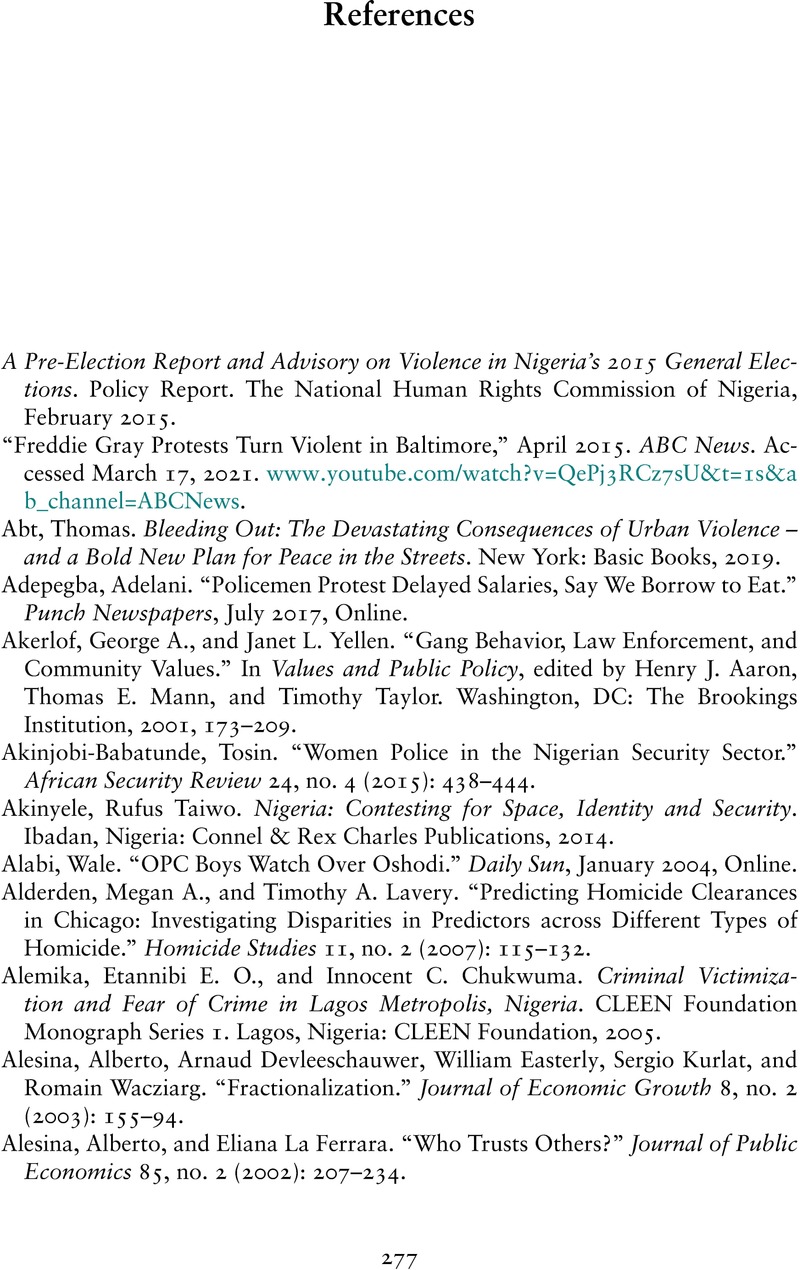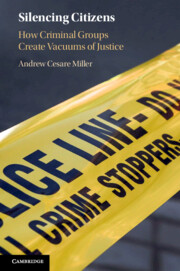References
Published online by Cambridge University Press: aN Invalid Date NaN
Summary

- Type
- Chapter
- Information
- Silencing CitizensHow Criminal Groups Create Vacuums of Justice, pp. 277 - 308Publisher: Cambridge University PressPrint publication year: 2024



